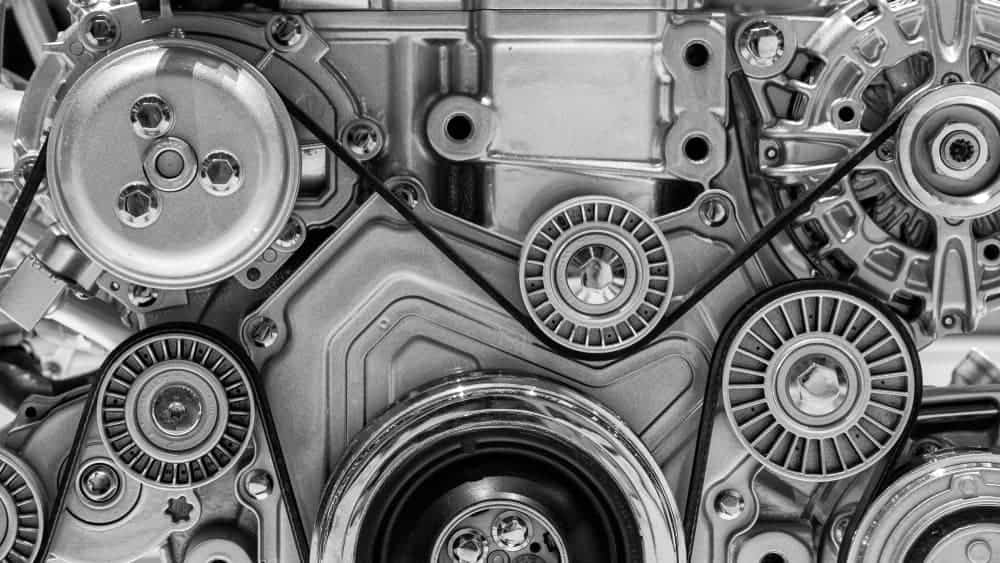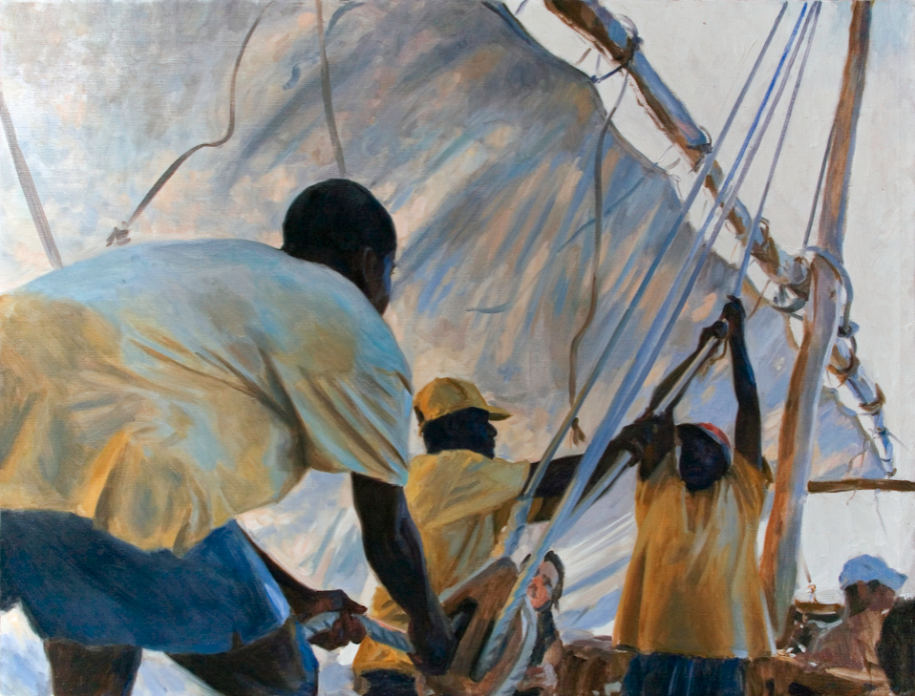Study Guide: Pulleys
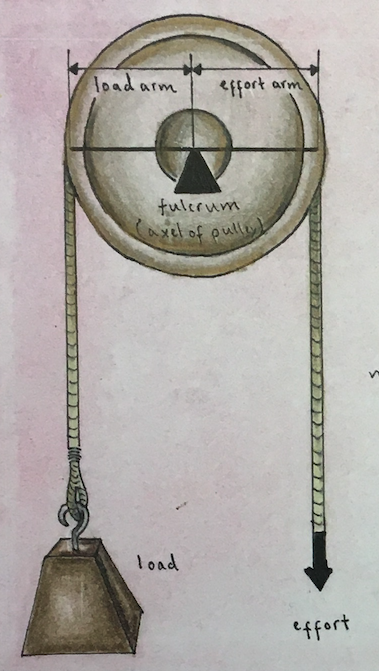
Vocabulary
- Pulley
- Block and Tackle
- Effort
- Weight
- Law of Levers
- Mechanical Advantage
What Are Pulleys
Pulleys are examples of Simple Machines. Simple machines are used to change the direction or amount of force we use to move objects. Pulleys are sometimes called Block and Tackle. The wheels and their mounts are the blocks, and the ropes that loop around them are the tackle.
The Invention of Pulleys
-
Ancient Chinese: The Chinese invented the pulley sometime between 2500 BCE and 550 BCE, at which time drawings of early pulleys were recorded in official Chinese documents.
-
Ancient Celts: The people who built Stonehenge are also thought to have used pulleys to move and lift the huge stones.
-
Mesopotamians: It is believed that the Mesopotamians used rope pulleys for hoisting water as early as 1500 BCE.
-
Early Greeks: The Greek historian Plutarch credits Archimedes with the invention of pulleys around 250 BCE.
-
Modern Technology: Modern machines use many simple and complex pulleys, such as the timing belt in an automobile engine.
How Pulleys Work
Pulleys make elegant use of Archimedes’ Law of Levers. The more wheels a pulley system uses and the more times the rope is looped around the wheels, the more weight can be moved. With enough wheels in the pulley system, you can lift yourself and more.
Single Wheel Pulleys
If you have a single wheel and a rope, a pulley helps you reverse the direction of the force. To lift something that weighs 100 kg, we pull down with a force equivalent to 100 kg. To raise the weight 1 meter into the air, we have must pull rope 1 meter. A one-wheel pulley simply reverses the direction of force. It doesn’t alter the force in any other way.
Two Wheel Pulleys
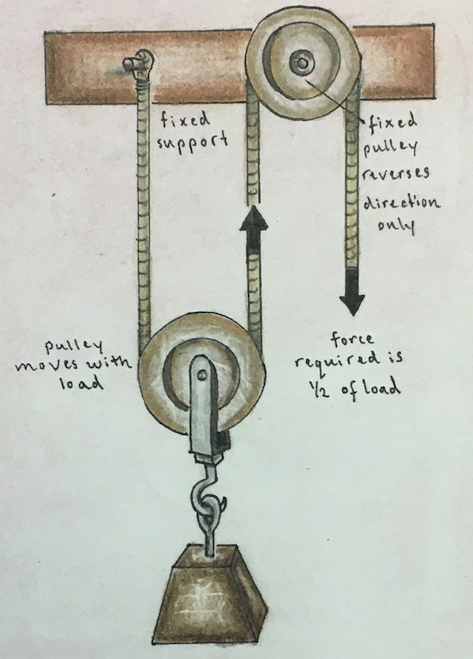
If we add more wheels and loop the rope around them, we can reduce the effort needed to lift the weight. Suppose we use two wheels. The 100kg mass is now supported by two sections of the same rope, and this means we can lift it by pulling with have the force. This is called Mechanical Advantage.
Mechanical Advantage
Mechanical advantage is a measure of how much a simple machine multiples the force. The bigger the mechanical advantage, the less force we need, AND the greater the distance we need to pull.
Four Wheel Pulley
If we use four wheels the weight is now hanging from four sections of rope. This means each section of rope is supporting a quarter of the total weight, and to raise the weight into the air, we only need to pull with a quarter the force. With four wheels and the rope working in four sections, a pulley cuts the lifting force we need to one fourth, but we must pull the rope four times as far.
Pulleys and The Law of Levers
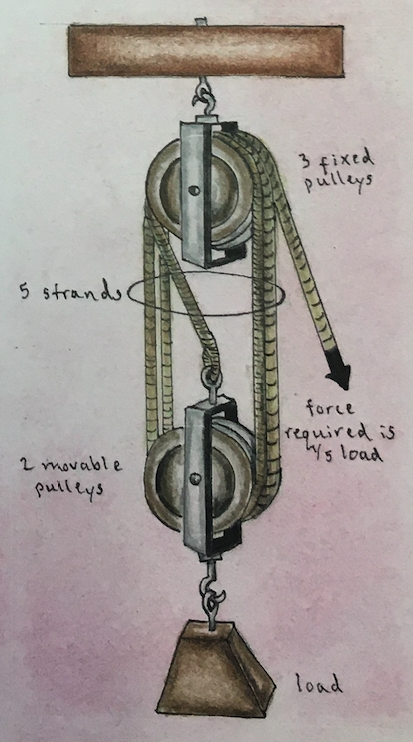
A pulley magnifies force in a similar way to a seesaw—which is a kind of lever. Both systems follow a universal rule, The Law of Levers. If we want to lift someone four times heavier than ourselves on a seesaw, we need to sit four times further away from the balancing point (fulcrum).
Free Energy?
Surely there’s a catch! If we can lift 100 kg by pulling with a force of only 25 kg, it seems we’re only doing a quarter of the work? And if that’s true, we could build a pulley that produces free energy. Put in one unit of energy and get four units out!
Unfortunately, as far as we can tell, in our Universe this strictly prohibited by the Law of the Conservation of Energy, which says you must always put in as much energy as you get out.
Think about pulleys in terms of the Law of Levers. If we raise a weight of 100 kg a distance of 1 meter, we have to do the same amount of work whether we use a pulley or not. We have to move the same force over the same distance. If we use a pulley and reduce the force we’re using by one-fourth, we will need to pull the rope four times are far. We pull with less force, but we need to pull further.
It gets worse! Rather than using less energy, we use more due to friction in the rope rubbing against the wheels, and the wheels rotating around their axles. Still, a good pulley helps get the job done, and that’s the goal.



